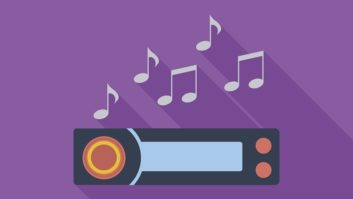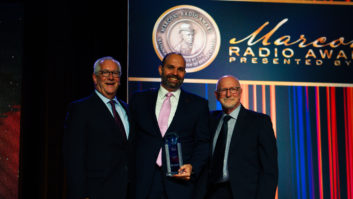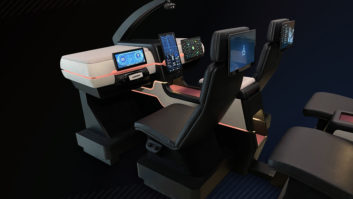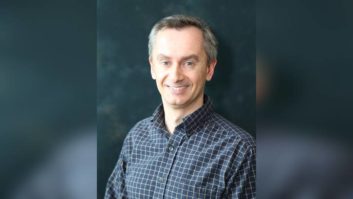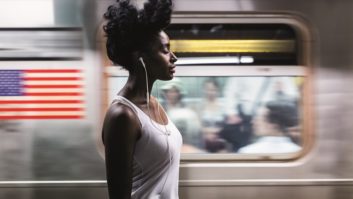LAS VEGAS Ibiquity Digital Corp. has submitted its digital AM radio system test results to the standards-setting National Radio Systems Committee, hoping to receive that group’s endorsement as it has for its FM system. It made the announcement during the CES convention here in January.
Meanwhile, two companies that offer a different kind of digital radio – satellite-delivered – jockeyed for position and consumer awareness of that nascent medium.
On the terrestrial side, Ibiquity says the latest results confirm that its AM in-band, on-channel system will deliver FM-like sound quality while preserving the integrity of the current analog AM band.
The NRSC will evaluate the results and submit them, with its own input, to the FCC.
Robert Struble, president/CEO of Ibiquity, said, “Because the NRSC has just gone through this same evaluation process with our FM system, their review of the AM test results is expected to proceed quickly with a final report being issued to the FCC within two months.”
One NRSC official estimated that the committee would have its report to the FCC by the end of March.
By the end of this year, Ibiquity hopes to have several stations converted to FM and AM IBOC in Chicago, Los Angeles, Miami, New York, San Francisco and Seattle.
Transmitter partners Harris, BE and Nautel plan to have IBOC-ready gear for sale at NAB2002.
The rollout would continue in additional markets, including Atlanta, Boston, Dallas, Denver, and Detroit, and will be targeted to coincide with commercial introduction of IBOC receivers in January 2003.
An Ibiquity executive said the level of consumer electronics sales in those markets was a key reason for targeting them first. Ibiquity plans to work with its transmitter and receiver manufacturing partners to coordinate availability of equipment in these areas.
In the sky
Meanwhile, Sirius Satellite Radio revealed more information about its gradual launch.
It added Jackson, Miss., to its planned initial rollout on Feb. 14, along with Houston, Phoenix and Denver. Why Jackson? It’s the birthplace of satellite TV. New Sirius President/CEO Joe Clayton helped debut satellite TV with RCA in that market in 1994.
Phase two rollout markets, set for April-May, are Albuquerque, Tulsa, Little Rock and Dallas/Ft. Worth.
By June, Sirius receivers will be available in Indianapolis, Nashville, Tampa and Miami. Sirius expects to be available nationally by July.
The chosen markets are in the top 30 for consumer electronics sales and are in relatively spread-out areas where commuters spend about an hour commuting in their cars.
“Sirius is not recycled radio,” said Clayton, in discussing the amount of original programming Sirius is creating for its channels.
He also announced a partnership with Court TV. Live trial coverage will air on that channel, which Clayton said was a new format for radio. The full Sirius channel lineup is shown on page 16.
The company said it is trying several marketing concepts to spark interest in its product. It will test different subscription rates in different markets in its initial rollout, to see what the market will bear.
Consumers in some cities will see a $9.95 monthly subscription rate; others will be charged $12.95. The company will advertise free trial subscriptions with factory rebates on radios in some markets.
Early XM adopters
Meanwhile, competitor XM Satellite said it had more than 30,000 paying subscribers as of the CES show, and claimed it is the fastest-selling audio product of the last 20 years.
President and CEO Hugh Panero said the number of subscribers exceeded most Wall Street analyst year-end estimates.
“Will people pay for radio?” Panero asked. “The answer is a resounding yes. … In fact, we have created the ‘car potato,’ people across the nation finding excuses to drive around to listen to XM or stuck sitting in their driveway listening to great music.
“Rather than being one year behind our competitor to market, we have a nine-month nationwide lead.”
XM’s partners had more than 100,000 radios in stores by Dec. 1. By the end of the first quarter, it expects to have product in more than 6,000 outlets.
Company officials say the product rollout hasn’t been entirely smooth. An XM executive told Radio World that Sony underestimated the demand for the home adapter for its Plug and Play unit. There were also some initial shortages in trucking antennas.
Both Sirius and XM say they need 3 million to 4 million subscribers to reach a break-even point and expect to achieve positive cash flow in 2004.






